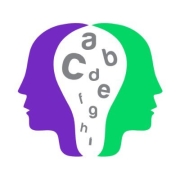AI Writing Tools have become a key asset for businesses aiming to enhance content creation, providing speed and efficiency that drive productivity. These tools leverage advanced AI algorithms to automate tasks ranging from generating user-friendly articles to crafting complex reports with accuracy and consistency.
The top 5 AI Writing Tool solutions are Google Gemini, Grammarly, QuillBot, Sudowrite and ProWritingAid, as ranked by PeerSpot users in March 2025. Google Gemini received the highest rating of 8.2 among the leaders, is the most popular solution in terms of searches by peers, and holds the largest mind share of 26.8%.
Today's AI Writing Tools are sophisticated solutions tailored to diverse business needs, streamlining workflow through natural language processing and machine learning capabilities. They enable professionals to produce high-quality content with less manual intervention, ensuring time-saving mechanisms and improving overall output quality. These tools are invaluable in a fast-paced environment, adapting to different writing styles and industries with ease.
What are the key features?In industries like marketing and journalism, AI Writing Tools are widely used to draft press releases, blog posts, and promotional content, allowing professionals to adapt quickly to changing trends. In the legal and medical fields, they aid in the preparation of detailed reports and documentation, improving accuracy and efficiency.
AI Writing Tools are invaluable for organizations that need to produce large quantities of content while maintaining high standards. By automating mundane tasks, they free up resources and help teams focus on strategic initiatives and creative endeavors, augmenting the overall productivity of the organization.

































Writing and Proofreading Tools are designed to assist users in improving the quality and accuracy of their written content. These tools utilize advanced algorithms and language processing techniques to analyze text and provide suggestions for improvement. Here is an overview of the different functions these tools employ:
Writing and Proofreading Tools are essential resources for individuals and businesses alike. These tools offer a wide range of benefits that can significantly improve the quality and accuracy of written content. From catching grammar and spelling errors to enhancing overall writing style, these tools are invaluable for anyone who wants to produce professional and error-free documents. Here are some key benefits of using writing and proofreading tools:
Writing and Proofreading Tools come in various forms, each designed to address specific aspects of the writing and proofreading process. Here are some of the different types of writing and proofreading tools available:
In the digital age, a variety of AI Writing and Proofreading Tools have emerged to assist writers in creating polished, compelling content. These tools can cater to different aspects of the writing process, from initial brainstorming to final edits.
Below are some prominent types of AI Writing and Proofreading Tools available.
1. Grammar and Spelling Checkers: These tools focus on correcting grammatical errors, punctuation, and spelling mistakes. Popular platforms like Grammarly and Hemingway Editor fall into this category. Grammarly offers advanced suggestions, including tone adjustments, while Hemingway highlights complex sentences and suggests simplifications for clarity.
2. Style and Readability Analyzers: These tools assess the overall readability and style of the text. Hemingway Editor, for instance, assigns a readability score based on the complexity of sentences and word choice. ProWritingAid is another comprehensive tool that not only checks grammar but provides detailed reports on style, including overused words, sentence structure, and readability.
3. Plagiarism Checkers: To ensure originality, plagiarism checkers like Turnitin and Copyscape compare written content against a vast database of published work. These tools are essential for academic and professional writing where originality is critical.
4. Collaborative Writing Platforms: Tools like Google Docs and Microsoft Word Online allow multiple users to collaborate on a document in real-time. They offer built-in commenting and suggesting features that make the collaboration process seamless and efficient.
5. Citation and Bibliography Managers: For academic writing, tools like EndNote, Zotero, and Mendeley help manage citations and generate bibliographies in various citation styles. These tools streamline the citation process, ensuring that references are correctly formatted and consistent.
6. Content Structuring Tools: These include mind mapping software like MindMeister and outlining tools like Scrivener. Such tools help writers organize thoughts and plan structures visually, which can be particularly beneficial for complex projects like books or research papers.
7. AI Writing Assistants: Sophisticated AI tools like OpenAI’s ChatGPT can assist not only in generating content ideas but also in drafting portions of text. These tools can simulate human-like writing, making them useful for brainstorming sessions, drafting, and even editing.
The array of AI Writing and Proofreading Tools available today can significantly enhance the writing process. From basic grammar checks to comprehensive style analysis and advanced AI assistance, these tools foster better writing and ensure polished, professional-quality output.
AI Writing and Proofreading Tools leverage advanced algorithms, machine learning, and natural language processing (NLP) to assist individuals in creating error-free text.
Here's an overview of how these tools function:
Writing Tools:
1. Real-Time Text Analysis:
2. Enhanced Vocabulary:
3. Formatting Assistance:
4. Content Structuring:
Proofreading Tools:
1. Error Detection:
2. Style Consistency:
3. Precision Edits:
4. Plagiarism Detection:
Integration and Use:
1. Cross-Platform Availability:
2. User Personalization:
AI Writing and Proofreading Tools enhance the writing process by providing sophisticated, AI-driven assistance for error detection, style consistency, vocabulary enhancement, and content structuring, ensuring high-quality text output.
AI Writing Tools streamline content creation by automating mundane tasks such as grammar checks and suggesting synonyms, allowing you to focus on creativity. These tools analyze massive datasets to generate relevant content ideas and assist in crafting engaging narratives tailored to your audience's preferences.
Are AI Writing Tools Effective for SEO Optimization?Absolutely, AI Writing Tools are designed to incorporate SEO optimization. They help identify relevant keywords, suggest content structures that rank well, and provide insights on improving readability scores. By integrating AI into your content strategy, you can enhance visibility and drive organic traffic.
Can AI Writing Tools Match My Brand's Voice?AI Writing Tools are becoming increasingly sophisticated in mimicking a specific brand voice. You can train these tools with past content to understand your style, tone, and vocabulary preferences. This ensures consistency in your messaging while providing a foundation to scale up your content production.
Do AI Writing Tools Support Multiple Languages?Many AI Writing Tools support multiple languages, enabling you to create content that caters to a global audience. They offer translation features and adapt to regional language nuances, ensuring your message resonates with diverse markets without losing meaning or context.
What Are the Limitations of AI Writing Tools?While AI Writing Tools excel at automating repetitive tasks, they might struggle with understanding the context as deeply as a human writer. They are limited by the data they have been trained on, which can sometimes result in generic outputs that require meticulous review and fine-tuning to align with your unique content needs.